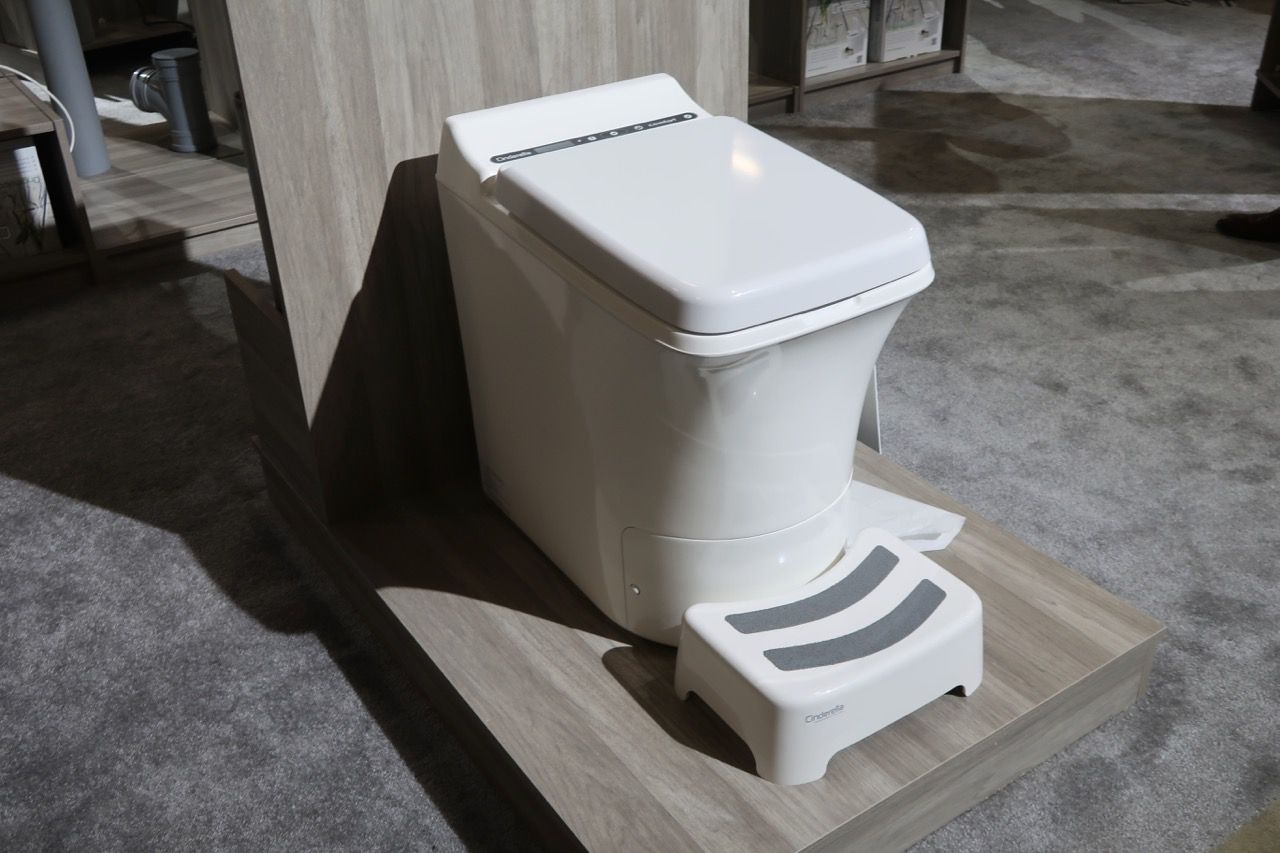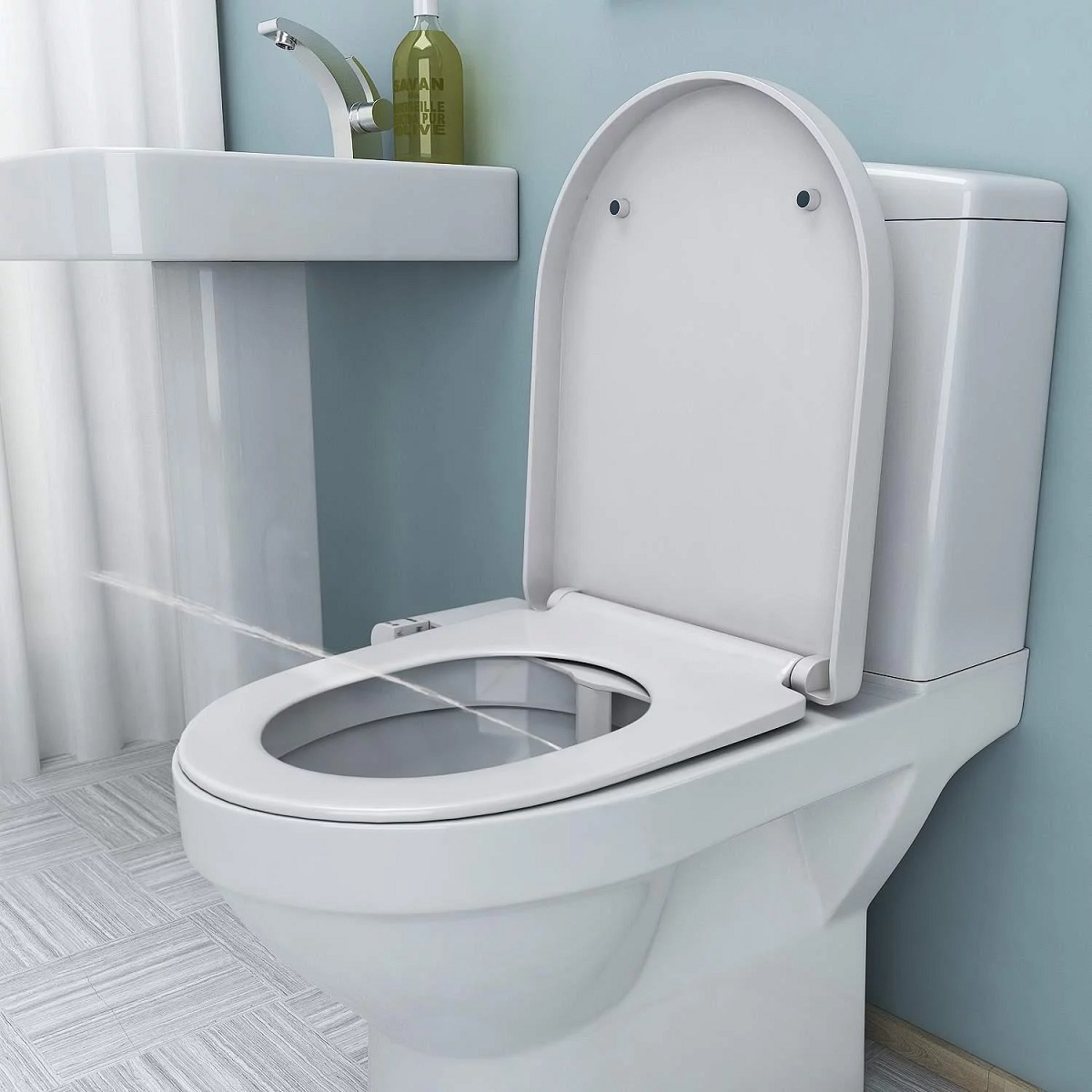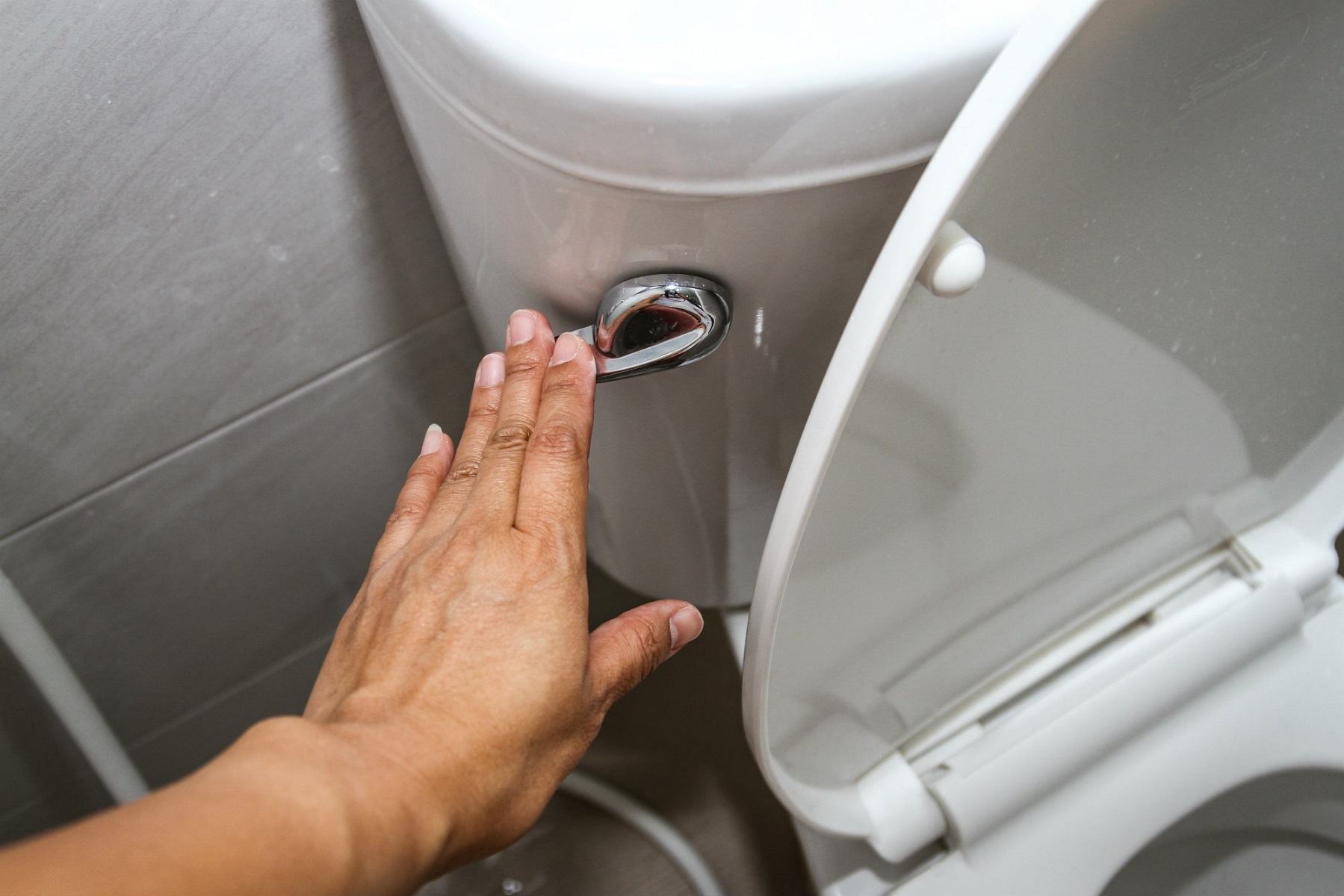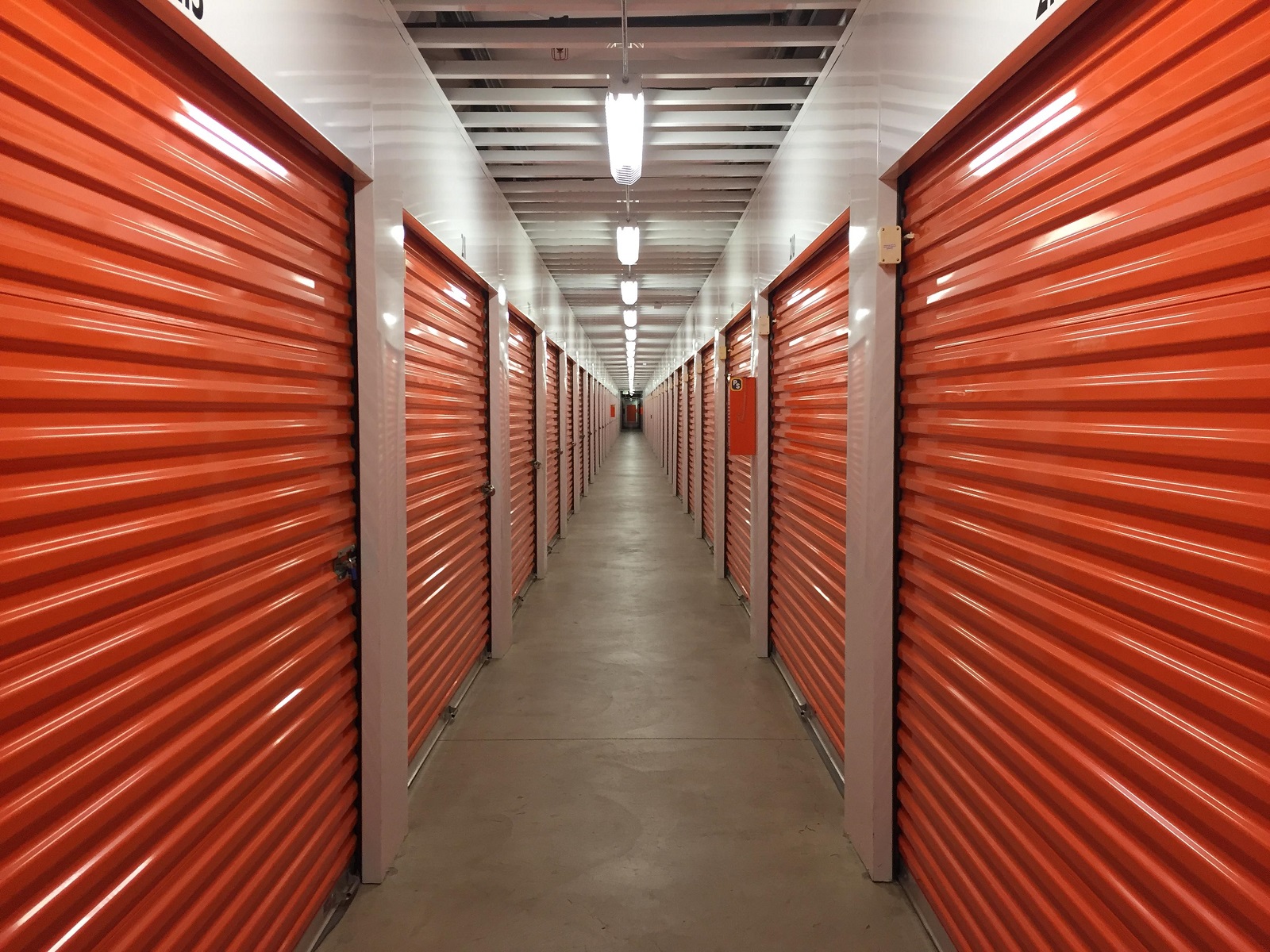

Articles
How Does An Incinerator Toilet Work
Modified: October 20, 2024
Discover how incinerator toilets work and their benefits in our informative articles. Explore the technology and understand their eco-friendly features.
(Many of the links in this article redirect to a specific reviewed product. Your purchase of these products through affiliate links helps to generate commission for Storables.com, at no extra cost. Learn more)
Introduction
In today’s modern world, advancements in technology have revolutionized almost every aspect of our lives. This includes even the most basic of necessities, such as toilets. While traditional flush toilets are the norm in most households, there is an alternative option that is gaining popularity – the incinerator toilet.
An incinerator toilet is a state-of-the-art facility that offers an innovative and eco-friendly solution for waste disposal. By using high temperatures to burn waste, it eliminates the need for water, plumbing, and sewage systems. This makes it an excellent choice for remote locations, off-grid cabins, boats, and even eco-friendly homes.
In this article, we will delve into the mechanics of an incinerator toilet, exploring how it works and the benefits it offers. So, let’s dive right in and discover the fascinating world of this environmentally friendly waste disposal system.
Key Takeaways:
- Incinerator toilets offer an eco-friendly, water-saving solution for waste disposal, ideal for remote locations. By using high temperatures to burn waste, they eliminate the need for traditional plumbing and sewage systems.
- While incinerator toilets provide numerous benefits, including odor control and adaptability, considerations such as energy consumption and ash disposal must be weighed. Their sustainable approach to waste management promotes environmental responsibility and off-grid living.
Read also: 9 Best Incinerating Toilet for 2025
What is an Incinerator Toilet?
An incinerator toilet, also known as a combustion or fire toilet, is a type of toilet that uses intense heat to burn human waste, converting it into a sterile ash residue. Unlike traditional flush toilets that rely on water to transport waste through plumbing systems, incinerator toilets operate independently and do not require any water or sewage infrastructure.
The main components of an incinerator toilet include a combustion chamber, an exhaust system, and a control panel. The combustion chamber is where the waste is burned at high temperatures, typically ranging between 600 to 900 degrees Celsius (1112 to 1652 degrees Fahrenheit). The exhaust system, which includes a ventilation fan and filters, helps eliminate any odors and ensures the safe release of gases outside the unit. The control panel allows users to regulate the incineration process and monitor the temperature and duration of the burn.
Incinerator toilets are designed to handle both solid and liquid waste effectively. Solid waste, such as feces and toilet paper, is easily combusted in the high-temperature environment. Liquid waste, on the other hand, is evaporated through a separate evaporation chamber, preventing any leakage or overflow. The remaining ash and residue from the combustion process are collected in a tray or container, which can be safely removed and disposed of.
It’s important to note that incinerator toilets are not to be confused with composting toilets. While both types of toilets offer eco-friendly solutions for waste management, they operate differently. Composting toilets rely on the natural decomposition process, with the waste breaking down into compost over time. In contrast, incinerator toilets use heat to completely burn the waste, leaving no trace of solid or liquid material behind.
How Does an Incinerator Toilet Work?
The operation of an incinerator toilet can be divided into three main steps: waste collection, the incineration process, and the cooling and disposal of ashes. Let’s explore each of these steps in detail:
Step 1: Waste Collection
When a user activates an incinerator toilet, waste is collected in a special receptacle located in the toilet bowl or chamber. Some models may require the use of disposable bags or liners to facilitate easy removal and disposal of the waste. These bags are designed to withstand the high temperatures of the incineration process and prevent any leakage.
Step 2: Incineration Process
Once the waste is collected, the incineration process begins. The waste is transferred to the combustion chamber, where it comes into contact with high temperatures and intense flames. The specific temperature and duration of the burn can be adjusted based on the user’s requirements and the model of the incinerator toilet.
During combustion, the organic matter in the waste, such as feces and toilet paper, is completely burned, while liquid waste is evaporated. The high temperatures ensure that all bacteria, pathogens, and odors are destroyed, leaving behind a sterile ash residue.
Read also: 12 Amazing Incinerator Toilet for 2025
Step 3: Cooling and Disposal of Ashes
After the incineration process is complete, the ashes and residue from the waste are left in the combustion chamber. The incinerator toilet includes a cooling system to cool down the ash and make it safe for handling. This can be achieved through natural cooling or with the assistance of cooling fans.
Once cooled, the ashes can be safely removed from the incinerator toilet. Most models feature a tray or container where the ashes are collected. Users can easily detach this tray and dispose of the ashes without any risk to their health or the environment. It’s essential to follow proper disposal guidelines and local regulations when handling and disposing of the ash residue.
It’s worth noting that modern incinerator toilets are equipped with safety features, such as sensors and alarms, to prevent accidents and ensure that the incineration process runs smoothly. These features monitor parameters like temperature, airflow, and chamber status to maintain a safe and efficient operation.
Step 1: Waste Collection
In the first step of the incinerator toilet process, waste collection plays a crucial role in facilitating the efficient disposal of human waste. Unlike traditional flush toilets that rely on water for waste transportation, incinerator toilets operate on a different mechanism.
When a user activates an incinerator toilet, waste is directed into a specially designed receptacle located in the toilet bowl or chamber. This receptacle is designed to securely hold the waste until it can undergo the incineration process. It is important to note that some models of incinerator toilets require the use of disposable bags or liners in the receptacle, while others have a built-in collection system.
The use of disposable bags or liners offers convenience for waste removal and disposal. These bags are designed to withstand the high temperatures of the incineration process without melting or causing any leakage. Additionally, they help in keeping the incinerator toilet clean and hygienic, as they can be easily removed and replaced after each use.
One advantage of incinerator toilet waste collection is that it can handle both solid and liquid waste effectively. Solid waste, such as feces and toilet paper, is easily collected in the receptacle, while liquid waste is separated and directed to a separate evaporation chamber or drain. This separation ensures that the incineration process remains focused on solid waste, preventing any complications or disruptions.
Overall, waste collection in an incinerator toilet is designed to be simple, efficient, and hygienic. Users can easily deposit their waste into the designated receptacle, and the system is capable of handling waste from multiple users without any issues. The use of disposable bags or liners makes waste removal hassle-free and ensures the cleanliness of the incinerator toilet for the next user.
Step 2: Incineration Process
Once the waste is collected in the incinerator toilet, it undergoes the second step of the process: the incineration process. This step involves subjecting the waste to high temperatures to completely burn it and transform it into a sterile ash residue.
Within the incinerator toilet, there is a designated combustion chamber where the waste is transferred for incineration. The combustion chamber is equipped with heating elements or a burner system that generates intense heat, typically ranging between 600 to 900 degrees Celsius (1112 to 1652 degrees Fahrenheit).
When the incineration process begins, the waste is exposed to the high temperatures within the combustion chamber. The organic matter in the waste, such as feces and toilet paper, starts to burn and break down. The combustion process is aided by the ample supply of oxygen within the chamber, ensuring a complete and efficient burn.
As the waste burns, any bacteria, pathogens, and odor-causing compounds are completely destroyed. The high temperatures ensure a thorough sterilization process, making the resulting ash residue free from any harmful elements. This helps maintain a sanitary and odor-free environment.
The incinerator toilet allows users to adjust the temperature and duration of the incineration process based on their specific needs and the model’s capabilities. This level of control ensures that the waste is effectively incinerated without unnecessary energy consumption. Some advanced incinerator toilets even have preset programs for different waste types, simplifying the process further.
It’s worth noting that during the incineration process, liquid waste is handled separately. Liquid waste, such as urine, is directed to an evaporation chamber or drain where it is evaporated. This prevents any leakage or overflow during the incineration process and ensures that the heat is focused on burning solid waste.
Overall, the incineration process in an incinerator toilet provides a highly effective and efficient way to dispose of waste. It eliminates the need for water and traditional sewage systems, making it a sustainable and environmentally friendly option. The resulting sterile ash residue is safe for disposal and can be easily removed from the incinerator toilet.
Step 3: Cooling and Disposal of Ashes
After the incineration process is complete in an incinerator toilet, the third and final step involves the cooling and disposal of the resulting ashes. This step ensures the safe handling and proper management of the waste by preparing it for final disposal.
Once the waste has been incinerated, the ashes and residue remain in the combustion chamber. The next phase is to cool down the ash to a safe temperature for handling. Incinerator toilets utilize various cooling mechanisms to facilitate this process.
One common cooling method is natural cooling, where the combustion chamber is designed to dissipate heat gradually. In this approach, the incinerator toilet is left idle after the incineration process, allowing the ashes to cool down on their own over time. However, this method may take a considerable amount of time, depending on the temperature reached during incineration.
Alternatively, some incinerator toilets incorporate cooling fans or air circulation systems. These systems expedite the cooling process by blowing cool air into the combustion chamber, rapidly reducing the temperature of the ashes. The assistance of cooling fans significantly shortens the cooling time, making it more convenient for users.
Once the ashes have reached a safe temperature, typically ambient room temperature, they can be safely removed from the incinerator toilet. Most models of incinerator toilets feature a tray or container where the ashes are collected. This tray is designed to be easily detachable for effortless and hygienic ash removal.
When disposing of the ashes, it is crucial to follow local guidelines and regulations. In many cases, the ashes can be disposed of in regular waste bins or designated disposal areas. However, it is essential to ensure that the ashes are completely cooled before disposal to avoid any fire hazards.
It’s worth noting that the resulting ash from the incineration process is sterile and safe for disposal. It contains no harmful pathogens or bacteria, making it environmentally friendly. Additionally, some users may choose to repurpose the ashes in certain scenarios, such as using them as a soil amendment in gardening applications.
Overall, the cooling and disposal of ashes in an incinerator toilet complete the waste management process. It ensures the safe handling and efficient removal of the residual ash, leaving the incinerator toilet ready for the next use and maintaining a clean and hygienic environment.
Read more: How Does Toilet Plumbing Work
Benefits of Using an Incinerator Toilet
Incinerator toilets offer a range of benefits that make them a compelling choice for waste management. Here are some key advantages of using an incinerator toilet:
1. Water Conservation
One of the primary benefits of incinerator toilets is their ability to operate without water. Traditional flush toilets require a constant supply of water for flushing and waste transportation. In contrast, incinerator toilets eliminate the need for water, reducing water consumption and promoting water conservation. This is particularly advantageous in areas with limited water resources or off-grid locations.
2. Eco-Friendly Solution
Incinerator toilets offer a sustainable and environmentally friendly waste management solution. By burning waste at high temperatures, they eliminate the need for sewage infrastructure, reducing the strain on traditional sewage systems and septic tanks. Furthermore, the incineration process destroys bacteria, pathogens, and odor-causing compounds, ensuring a hygienic and odor-free waste disposal system.
3. Independence from Plumbing
With an incinerator toilet, users can enjoy the freedom and independence of not relying on complex plumbing systems. This makes incinerator toilets suitable for remote locations, off-grid cabins, boats, and other areas where traditional plumbing may not be feasible. It allows individuals and communities to adopt more sustainable and self-sufficient waste management practices.
Read more: How Does A Bidet Toilet Work
4. No Need for Sewage Treatment
Unlike traditional flush toilets that require regular sewage treatments or septic tank maintenance, incinerator toilets eliminate the need for such treatments. The incineration process converts waste into sterile ash, which can be easily removed and disposed of. This simplifies waste management and reduces the need for costly and time-consuming maintenance.
5. Odor Control
Incinerator toilets incorporate exhaust systems and filters that effectively eliminate any odors during the incineration process. The high temperatures of incineration ensure that odor-causing compounds are destroyed, providing a fresh and odor-free experience for users. This is particularly beneficial in small spaces, where controlling odors is crucial.
6. Versatility and Adaptability
Incinerator toilets come in various sizes and designs, making them adaptable to different spaces and user needs. They can be installed in homes, cabins, boats, RVs, and even outdoor settings. This versatility allows individuals to choose the most suitable incinerator toilet for their specific requirements and ensures a convenient and tailored waste management solution.
In summary, incinerator toilets offer numerous advantages, including water conservation, environmental sustainability, independence from plumbing, simplified waste management, odor control, and adaptability. These benefits make incinerator toilets a compelling choice for those seeking an efficient, eco-friendly, and self-sufficient waste disposal option.
Considerations and Limitations
While incinerator toilets offer several advantages, it’s important to consider certain factors and limitations before deciding to install one. Here are some considerations to keep in mind:
Read more: How Does A Cassette Toilet Work
1. Energy Consumption
Incinerator toilets require a power source to generate the high temperatures needed for the incineration process. This means that they depend on electricity or other fuel sources, which can contribute to energy consumption. It is important to assess the energy requirements and costs associated with operating an incinerator toilet to ensure it aligns with your energy goals and availability.
2. Ash Disposal
While the ash residue produced by the incineration process is sterile and safe for disposal, it still needs to be handled and disposed of properly. It’s essential to follow local regulations and guidelines on ash disposal, as these may vary depending on the jurisdiction. Some areas may have specific requirements for ash disposal, and it’s important to adhere to these guidelines to prevent any environmental or health risks.
3. Maintenance and Upkeep
Incinerator toilets, like any other mechanical system, require regular maintenance to ensure optimal performance and longevity. This may include cleaning the combustion chamber, replacing burner elements, and checking the exhaust system and filters. It’s essential to follow the manufacturer’s guidelines for maintenance and conduct regular inspections to address any potential issues promptly.
4. Cost Considerations
Incinerator toilets tend to have a higher upfront cost compared to traditional flush toilets. Additionally, there may be ongoing costs associated with fuel or electricity consumption and maintenance. It’s important to consider the budget and weigh the long-term benefits against the initial investment to determine if an incinerator toilet is financially viable for your specific circumstances.
Read more: How Does A Rv Toilet Work
5. Ventilation Requirements
Incinerator toilets require proper ventilation to ensure the safe release of gases and fumes generated during the incineration process. Adequate ventilation is essential to maintain indoor air quality and prevent the buildup of harmful gases. It’s important to ensure that the installation of an incinerator toilet includes proper ventilation measures to meet safety standards and regulations.
6. Capacity and Usage
Incinerator toilets typically have a limited waste capacity and are designed for average usage. If you anticipate heavy usage or have a large number of users, it’s important to consider the capacity of the incinerator toilet and its ability to handle the waste load. You may need to choose a model that accommodates higher usage or consider additional units.
Considering these factors and limitations will help you make an informed decision about whether an incinerator toilet is suitable for your specific needs and circumstances. It’s important to evaluate the cost, energy requirements, maintenance, disposal regulations, and usage considerations to determine if an incinerator toilet aligns with your waste management goals and requirements.
Conclusion
Incinerator toilets offer a revolutionary and eco-friendly solution to waste management, providing numerous benefits for users. These technologically advanced toilets eliminate the need for water and traditional sewage systems, making them ideal for remote locations, off-grid living, and eco-friendly homes. By utilizing high temperatures to burn waste and convert it into sterile ash, incinerator toilets provide a clean and sanitary waste disposal method.
Throughout this article, we have explored how incinerator toilets work in three distinct steps: waste collection, the incineration process, and the cooling and disposal of ashes. We have highlighted the advantages of using incinerator toilets, including water conservation, eco-friendliness, independence from plumbing, odor control, and adaptability. However, it’s essential to consider factors such as energy consumption, ash disposal, maintenance requirements, cost considerations, ventilation requirements, and capacity before installing an incinerator toilet.
In conclusion, incinerator toilets provide a sustainable and efficient alternative to traditional flush toilets. They offer the freedom to be self-sufficient in waste management, reduce water consumption, and minimize the strain on sewage systems. Incinerator toilets play a crucial role in promoting environmental sustainability and off-grid living, making them a viable choice for those seeking innovative and responsible waste management solutions.
As technology continues to advance, incinerator toilets will likely evolve further, addressing limitations and optimizing their performance. With ongoing improvements and increased awareness of environmental issues, we can expect incinerator toilets to become even more efficient, cost-effective, and accessible, paving the way for a greener and more sustainable future.
Frequently Asked Questions about How Does An Incinerator Toilet Work
Was this page helpful?
At Storables.com, we guarantee accurate and reliable information. Our content, validated by Expert Board Contributors, is crafted following stringent Editorial Policies. We're committed to providing you with well-researched, expert-backed insights for all your informational needs.











0 thoughts on “How Does An Incinerator Toilet Work”